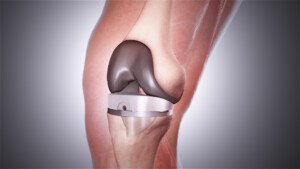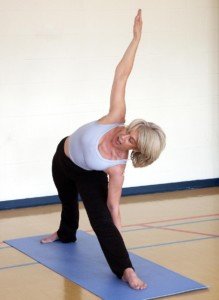Since osteoarthritis impairs an elderly person’s walk, why doesn’t total knee replacement surgery usually correct this even though the pain is gone?
After all, the bone-on-bone contact that causes pain – and therefore either a limp or otherwise abnormal gait – is no longer present once the patient recovers from the TKR.
“This is variable, but most patients will not achieve a completely normal gait,” says Barbara Bergin, MD, board certified orthopedic surgeon at and co-founder of Texas Orthopedics, Sports & Rehabilitation Associates.
“This is usually because they have been walking with an abnormal gait for many years before the total knee replacement.
“Sometimes they have not completely straightened their arthritic knee for a decade, so the muscles that straighten the knee all the way are weak and have very little chance of redeveloping.
“Patients get used to walking with a bent-knee gait and continue to do so after surgery.
“Most patients are elderly and walk more slowly, with their head and neck bent downward for balance and safety, and because their spine is bent.
“This doesn’t change after knee replacement. Crooked spines do not straighten after knee replacement.

Scientific Animations, Creative Commons/BY-SA/Attribution-ShareAlike 4.0 International
“A patient would have to be very determined to rehabilitate weakened legs and their habitual way of walking to make a difference in their gait.”
This may mean working with a personal trainer who’s very knowledgeable in how to improve gait, balance and stability with ambulation.
Or, it may mean many sessions with a physical therapist.
Yoga is another option, as it has been known to create dramatic results in physically impaired people who’d had little success with traditional physical therapy.

“That being said, gaits are much improved following knee replacement, simply because patients are no longer limping due to pain,” says Dr. Bergin.
“Younger patients, who have not yet developed the protective gait of the elderly, are more likely to achieve a more normal gait after knee replacement.”
Many knee replacement patients are middle aged. They are much better candidates for any long-term, intensive rehabilitation to regain a normal gait.
However, being elderly should not stop you from pursuing this if a normal gait pattern is important to you.
If standard physical therapy doesn’t yield results, you’ll want to pursue other options, and that includes tai chi and any strength training that your surgeon approves of.

Dr. Bergin is a general orthopedist, surgically and conservatively treating all manner of bone and joint conditions. She enjoys educating patients so they can emerge stronger than they were before their orthopedic injury or surgery.
 Lorra Garrick has been covering medical, fitness and cybersecurity topics for many years, having written thousands of articles for print magazines and websites, including as a ghostwriter. She’s also a former ACE-certified personal trainer.
Lorra Garrick has been covering medical, fitness and cybersecurity topics for many years, having written thousands of articles for print magazines and websites, including as a ghostwriter. She’s also a former ACE-certified personal trainer.
.


























